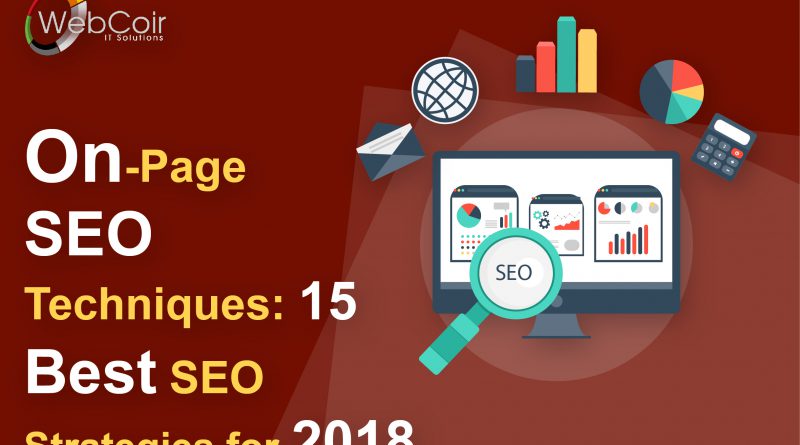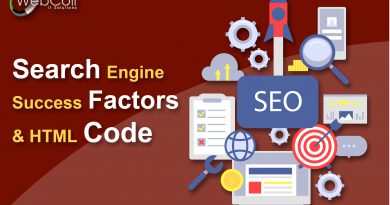ON-PAGE SEO TECHNIQUES: 15 BEST SEO STRATEGIES FOR 2018
On-Page SEO Techniques are no enchantment traps! In any case, these On-Page SEO systems can possibly bring your blog or site or miniaturized scale website or presentation page onto the principal page and even the main spot of the web crawler result pages.On-Page SEO Techniques are no enchantment traps! Nonetheless, these On-Page SEO procedures can possibly bring your blog or site or miniaturized scale website or greeting page onto the principal page and even the primary spot of the web index result pages.
Sounds Great?
You may locate this difficult to accept yet the facts demonstrate that you can accomplish the main page result with ZERO backlink. Presently, let me walk you through how this can be accomplished.
On the off chance that you are perusing this blog currently, you’d presumably realize what “Website streamlining” is. It is ordinarily called SEO. I’m giving you a snappy brief on Search Engine Optimization, kinds of SEO procedures, the methodologies engaged with these procedures and so forth.
What is Search Engine Optimization?
Site design improvement is only the way toward expediting our site or blog to the highest point of the web crawler result pages (SERPs). This advancement is essentially ordered into two sorts.
On-Page Optimization
Off-page Optimization
What is On-Page SEO Techniques?
The process of updating elements such as coding, text, images etc within our website or blog is called on-page optimization.
What is Off-Page SEO Techniques?
The process to acquiring back links, which point to our website, is called off-page optimization.
Both, the on-page and off-page optimization can be done in the following three ways:
White Hat SEO Techniques
Black Hat SEO Techniques
Gray Hat SEO Techniques
White Hat SEO Techniques
Experts call the White Hat SEO as the most organic/natural way of SEO process which follows search engine rules and policies. Most of the techniques are done to please the users and not to please the search engines. The primary goal of these techniques would be to increase the user experience and website usability.
Black Hat SEO Techniques
Black Hat SEO techniques are completely opposite to White Hat SEO techniques. Here, the process is of implementing the techniques to please only search engines without giving much thought about the users and relevance. The website might get penalized if we keep practising such black hat techniques. This can be done through a completely automated process through bots, programs, tools etc., without any human involvement.
Gray Hat SEO Techniques
You guessed it right?
It is the combination of both White Hat SEO techniques and Black Hat SEO techniques. Most of the newbies in the digital marketing field are executing Gray Hat SEO techniques.
In this blog post, I will share a few On-Page SEO techniques with you, that can be done completely through White Hat method.
15 Best On-Page SEO Techniques to rank in the 1st page with zero Back links.
I have listed must-have 15 on-page techniques under categories, which I have further divided into 10 Groups, for better understanding.
HTML Tags
These HTML tags are the first and most important technique ever in the evaluation of on-page Search Engine Optimization.
1. Page Title
The page title or post title is nothing but the title which appears as a first thing on the website or webpage. The title can be around 60 to 80 characters limit. And also, make sure your post title always comes with H1 tags. If you are not able to update your post title in H1, ask your developers to do so.
2. SEO Title
Google and other major search engines take the SEO title and display it in the search engine result pages. Google typically displays the first 55 to 65 characters (with space). So make sure your SEO title would be around 60 characters. You can check the SEO title by hovering your mouse pointer over the browser tab. The page title and the SEO title can either be the same or slightly different.
Format:
Meta Tags
Meta tags are introduced only for Meta search engine, to understand about the webpage, and it is not visible to the users in the browser. Let’s see how this can help us:
3. Meta Description
Meta description is not a direct SEO ranking factor but it helps in ranking indirectly. It is one of the best places to place our keywords. Meta description helps increase the click through rate (CTR) in the SERPs. CTR is again one of the ranking factors in SEO. Most of the search engines display the keywords in the description in bold format.
Format:
4. Meta Keywords
Meta keywords are the place where we can update our targeting keywords. 3 to 4 keywords are suggestible. Few experts do not bother about the usage of meta keywords. Meta keywords are the least priority in ranking factors in SEO. But my opinion is, every single thing must matter to us if we really want to beat the competition.
Format:
5. Meta Robots
Meta robots are another special html tag where we tell the robots or bots to either index or not index our website page.
Example 1:
The above example means that we tell the robots to index or scan all the webpage content and we allow bots to follow all the external links.
Example 2:
The second example means that we do not allow bots to either index the webpage for the blog page or follow any of the links which is available in that particular page.
Make sure your page is updated with index and follow tags to let the search engine index the page content.
6. Meta Author
This Meta tag has little influence in search engine ranking. In this tag, we can add the author’s name of the particular blog post. This is mostly applicable for blogs and article pages. We can ignore this tag if we have ecommerce or shopping websites.
Format:
7. Meta Language
A Meta Language tag is basically used to signify what language the website content is written in.
Format:
Schema Tags (For Google+)
Schema is nothing but micro data that makes it much simple for search engines to parse the content on our web pages more effectively so they can serve relevant results to users based on search queries.
8. Page Type
Page type is one of the most important schema tags where we need to tell the search engine about the type of our webpage. These types can be web pages, articles, book reviews, events, movies, products, local businesses, organizations, persons etc.,
Format:
9. Name (160 Char)
This acts as the title attribute of the rich snippet and should be limited to 160 characters.
Format:
On-Page SEO Techniques 2018
10. Description (175 Char)
This is the description of the rich snippet and should be limited to 185 characters.
Format:
The best 15 On-Page seo techniques you can find to rank in #1 position
11. Image
This is the image of the rich snippet with an optimal size of 180 x 120. Google+ will shrink this image, but if it is too small, it will not be displayed.
Format:
Content
12. Quality/Unique Content
The quality of your content is essential because only with quality content can you attract a lot of people to check out your posts. The uniqueness in your content makes users want to go through the work you do, thus making your work viewed by many. This gives your website an edge in search engine ranking.
13. Content Structure
Writing huge paragraphs does not appeal to anyone. For example, blogs must contain introduction, body, and conclusion. While writing the body for the blog, you can also add points instead of paragraphs to make it more engaging. This will encourage more viewers to visit your website, thus increasing the traffic there.
14. Word Count (1200 Words Min)
The word count should at least be a minimum of 1200 words so the content seems good enough. This is not the minimum word count to publish a blog, but a minimum of 1200 words makes your content’s readability higher.
15. Update Constantly (3 Blogs Per Week)
It is important to keep your website and the users updated to get an SEO ranking factor. The popularity of a website dies when there is nothing to keep the users engaged. Try to post at least 2 blogs per week, thus ensuring that your website stays constantly updated.




